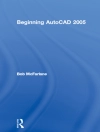Natural cilia are tiny hairs on cells which have generated and sensed fluid flow in biological systems for billions of years. Mimicking this action in artificial systems presents interesting opportunities for flow control in lab-on-a-chip devices. Research into this field began almost a decade ago, and this book presents the state-of-the-art in this rapidly developing field of research inspired by nature.
Establishing a link between nature and technology is a major attraction to those entering the field, which encompasses materials, processing, fluid mechanics, fluid-structure interaction, and biomedical applications. Artificial Cilia will appeal to anyone working in these areas and presents beautiful examples of how a biological system can form the successful basis for research and technical applications.
The editors have been pioneers in the field since establishing a major European project on artificial cilia in 2005, and they are joined by leading experts from across the globe in presenting a comprehensive digest of this exciting new technology.
İçerik tablosu
Chapter 1: Introduction;
Section: Theoretical and numerical descriptions of Artificial Cilia;
Chapter 2: Numerical modeling for artificial cilia;
Chapter 3: Computational design of magnetic artificial cilia;
Chapter 4: Modeling the interaction of active cilia with species in solution: from chemical reagents to microscopic particles;
Chapter 5: Electrostatic artificial cilia;
Chapter 6: Ferromagnetic cilia;
Chapter 7: Light actuated artificial cilia based on liquid crystal networks;
Chapter 8: Hydrogel-Actuated Integrated Responsive Systems (HAIRS): Creating Cilia-like ‘Hairy’ Surfaces;
Chapter 9: Microwalkers – Charles Singh and Alfredo Alexander-Katz;
Chapter 10: Artificial flagellar microswimmers;
Section: The potential of artificial cilia: experimental evidence;
Chapter 11: Fluid manipulation by artificial cilia;
Chapter 12: Measurement of Fluid Flow Generated by Artificial Cilia
Yazar hakkında
Jaap den Toonder studied at the Delft University of Technology and got his Master’s degree in Applied Mathematics in 1991 (cum laude). He received a Ph D degree (cum laude) from the same university in 1996 on a numerical/theoretical and experimental study of drag reduction in turbulent flows by polymer additives. His advisor was professor Frans Nieuwstadt.












